Springtime has arrived and with it come memories of the season of Passover: storm windows being replaced by screen windows, cleaning the house from top to bottom, cabinets being taped off, Mom tearing apart the kitchen in the day or two before the first night. As winter gives way to spring, I too begin this process as I prepare for our family seder.
I spent my childhood growing up in a Sephardic Jewish home in New Jersey. My father always led our seder dressed in his Moroccan jalaba with a collection of haggadot at hand. I looked forward to my mother's delicious charoset, grape juice, and Moroccan salads eaten with matzah.
I both loved and dreaded the seder. Dad would always settle on a combination of an ornate, velvet-covered haggadah along with a copy of the iconic Maxwell House version, both well-worn with dozens of purple wine stains from over the years. The formal language of those haggadot combined with my father's thick French-Moroccan accent gave my siblings and I a few moments of levity in this long, drawn-out ritual; we quietly giggled as he spoke the words "omnipotent" or "annihilate."
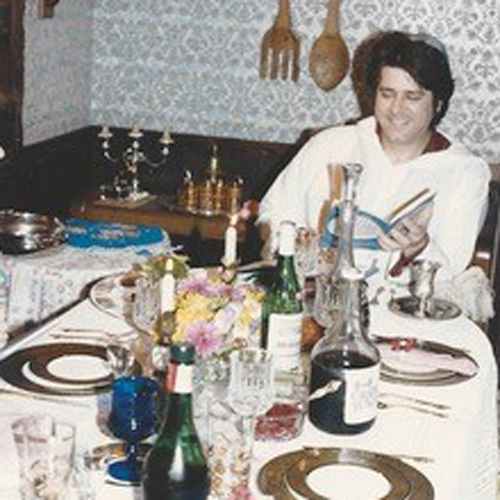
My dad preparing to lead our seder in 1985.
One year, we broke with tradition and attended the seder at the home of my father's orthodox rabbi. I don't remember much about that night, except that the seder lasted for hours, my stomach was grumbling, and I didn't understand a single word -- it was all done in Hebrew. I was young, but I'm fairly certain that the "festive meal" was served after midnight. My sister says she remembers that seder as "the longest night of my life…starving. And the rabbi kept stopping to tell stories."
Being so young, the meaning behind the ceremony and ritual of the Passover seder -- the retelling of the story -- was lost to hungry stomachs and boredom, setting the stage for my future love and dread of Passover.
As I got older, I began to understand the merit of a little discomfort and hunger as we tell the story of our oppression, but I still felt spiritually disconnected. The Haggadah says that in every generation we are obligated to see ourselves as if we had participated in the exodus from Egypt. We are supposed to retell the story as if we were there…as if we, too, were brought out of Egypt. Yet every year I felt like I was looking in from the outside, checking off the items that led up to the meal. Somewhere along the way, I lost my connection to the story.
The situation became more difficult once I had children of my own. I found myself anxious over how they would sit through hours at a formal table fumbling through words like "thusly," "thouest," and "verily," repeatedly asking when dinner was going to be served.
If we are supposed to retell the story to our children as if they were there, shouldn't we endeavor to make our seders appealing to our youngest participants? How could I create a seder that would engage my children so that they really listened to the story and participated in it rather than counting the minutes until it was over?
Our children are still quite young -- 9, 7, and 3 to be exact. Attention spans are short, patience is thin, and tolerance for unusual foods low. I wanted to simplify the seders of my childhood into something more meaningful for my own kids. I didn't want them to sit through a reading of the story of the exodus -- I wanted them to experience it.
It occurred to me that I wasn't obligated to recreate my parents' seder in my own home. I could do it differently. I had to take a hard look through my 30-plus years of Passovers and breakdown exactly where I felt lost in my childhood seders so I could extend my children's involvement beyond mah nishtanah.
.jpg)
Realization #1: A full seder was just too long
I had no desire to have a four-hour seder full of formal language, so I went on a search for new haggadot. In previous years, we used a haggadah that lets you complete the seder in less than 30 minutes. This year, we will be using PJ Library's Family Haggadah which is child-centric, simple, and easy to understand for everyone at the table including my non-Jewish husband, guests, and most importantly, young children. It may not be 30 minutes, but it will still allow our family to retell the whole story, eat the "festive meal," drink all four cups of wine, welcome the prophet Elijah, and finish the seder without passing the midnight mark -- "Dayeinu" and all.
Realization #2: I didn't see enough of the women in the story
The Babylonian Talmud (Sotah 9b) says, "If it wasn't for the righteousness of women of that generation we would not have been redeemed from Egypt." Yet the seders of my childhood made no strong commentary on the contributions of women such as Yocheved, Miriam, Zipporah, Moses' adoptive Egyptian mother, Bithiah, or the Jewish women that continued to have babies when their Jewish husbands didn't see the point. To give the women of the story a seat at the table, we adopted the new tradition of placing Miriam's Cup on our table to fill with water during the seder as a symbol of Miriam's well, which provided the Israelites with water through the desert. Having this cup on the table elevates Miriam beyond simply being the sister of Moses. It opens the door for us to discuss the women that played a part in the Exodus story.
Revelation #3: The plagues terrified me
You think Bird Box was scary? How about being a child hearing the full list of the ten plagues? Rivers turning to blood, people covered in boils, vermin, locusts, sudden darkness? To help our littlest seder guests avoid post-seder nightmares, we added plague finger puppets for the kids to take some of the terror out of the plagues.
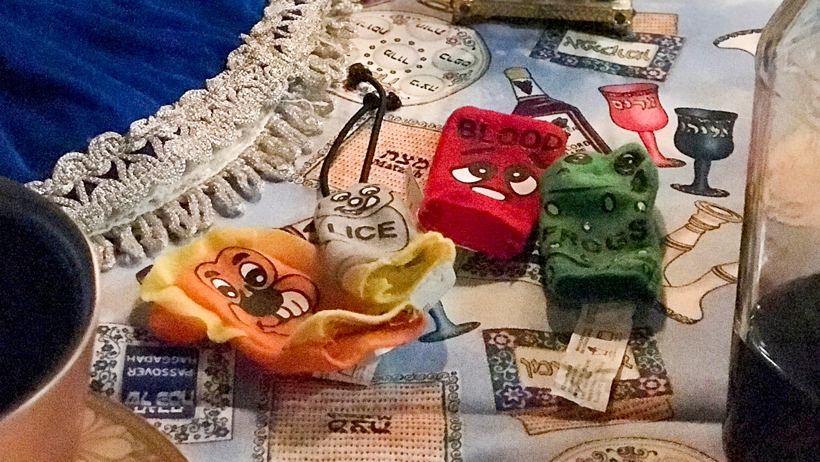
Revelation #4: Passover is a somber tale, but there is still room for fun
We toss inflatable "matzah balls," have races with plastic frogs you flip with a finger. We watch The Prince of Egypt and Shalom Sesame's Passover episode. Involving children in the seder has given rise to the creation of tablescapes that depict the story of the Exodus made of LEGOs, Playmobil, or other toys. Our oldest loves LEGOs and we will be working together to build LEGO centerpieces to help us retell the story.
As we head into Passover 5779, we have successfully rebuilt our own seder to fit our family of today. We are committed to allowing it to be a living, breathing experience that can grow with us, retelling the story in a manner that is consistent with the stages of our life, blending old traditions with new ones, while also letting go of those that no longer serve us. As our children grow, some traditions will change and some will stay the same.
This process began with my children's experience in mind, but I ultimately realized that I needed all of these updates, too. I needed to remake the seder so I could reconnect with it myself. And that has been the biggest revelation of all.
Micheline Welch is a busy Jewish wife, mom, and writer/sometimes blogger. Born to a Midwest mother from Wisconsin and a French Moroccan father, her life continues to be a glorious tapestry of mismatched threads. She lives with her wonderful husband, three young children, and sweet dog in the northwest suburbs of Chicago.
Read more stories in the "Why We Retell the Story" Passover blog series at oychicago.com/Passover.
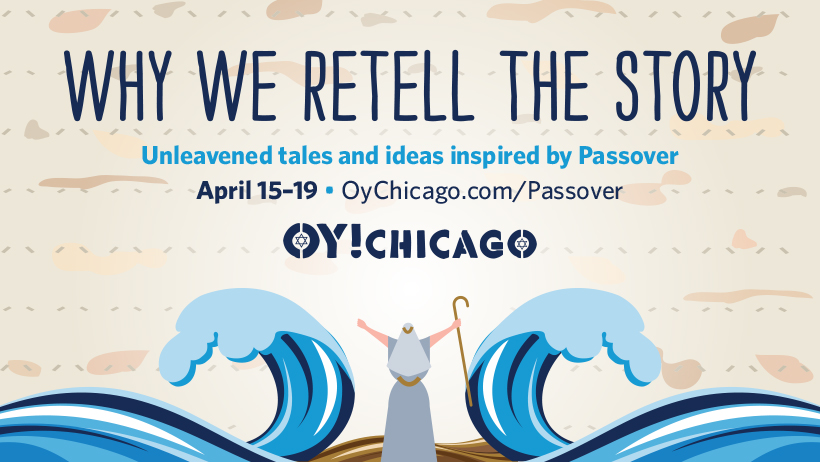



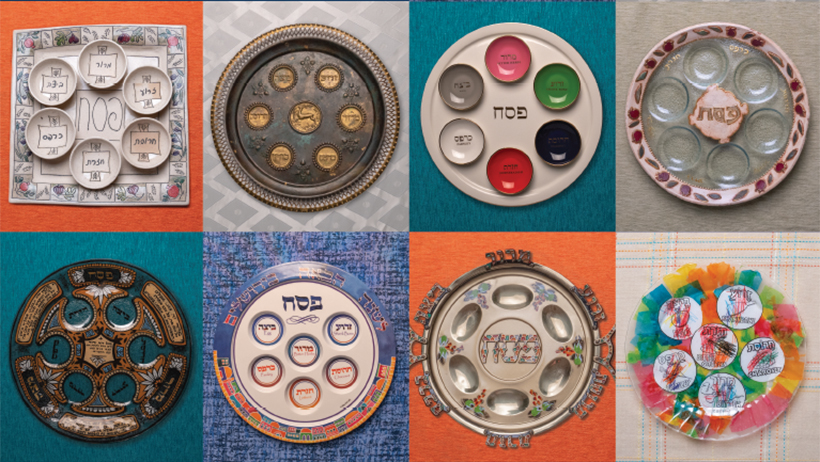
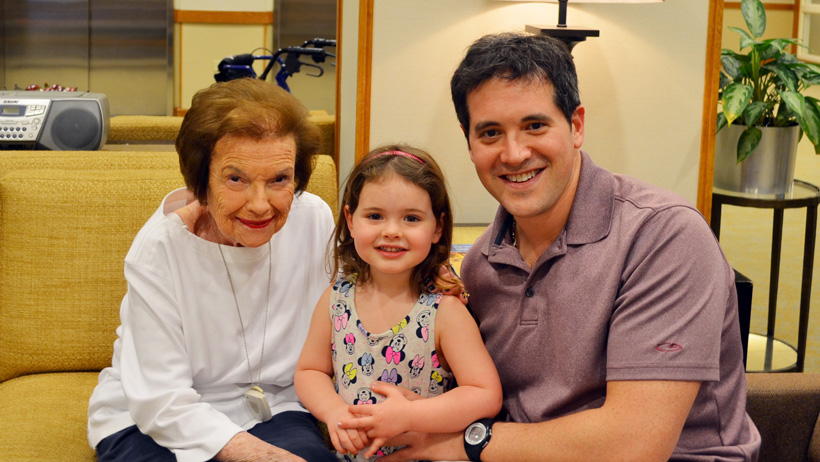

.jpg)



